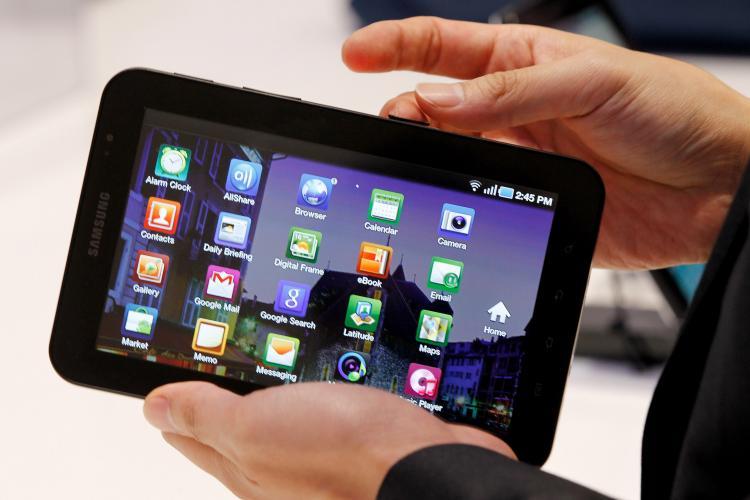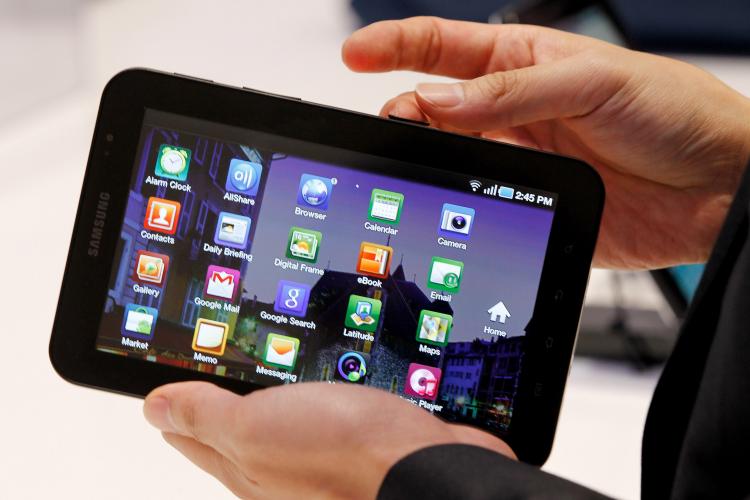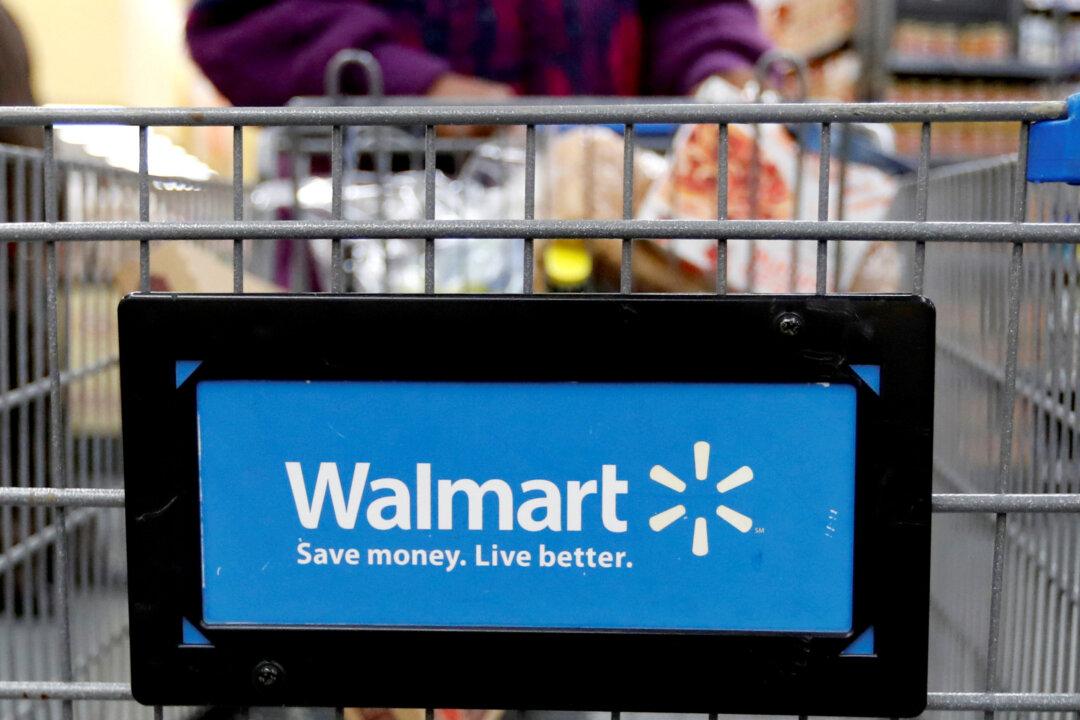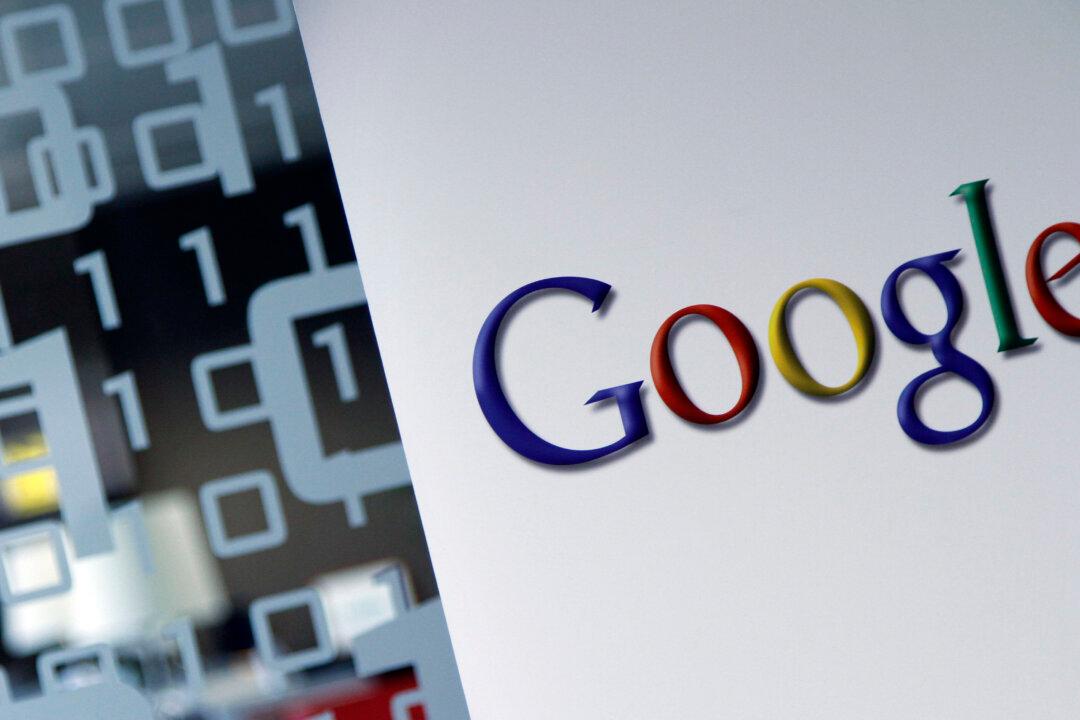More details about the Samsung Galaxy Tab—the first mass-market tablet computer that could possibly contend with the iPad—were announced by Samsung on Thursday evening, continuing the build up of media hype surrounding the device.
The Galaxy Tab will feature a 7-inch screen and run Google’s highly-successful Android operating system. It will be available for purchase in the Fall, although Samsung did not provide a firm launch date for the device.
While details for the device were widely circulated after its official unveiling earlier this month, Samsung officially announced that the Galaxy Tab would be available in the US with support for all major wireless carriers—Verizon, Sprint, AT&T and T-Mobile.
The Samsung Galaxy Tab will run the latest version of the Android operating system, codenamed “Froyo,” and will feature a 1-Ghz Hummingbird processor and 1024x600 pixel Super VGA resolution.
PC World magazine reported that the device weighed only 0.8 pounds, in contrast to iPad’s 1.5 pounds, and was “comfy to hold in one hand.”
The Galaxy Tab will also feature two cameras, a 3.2MP back-facing camera and a lesser-resolution 1.3MP front camera, likely for allowing users to make video calls and chats on voice-over-IP applications.
It is unclear whether Android applications—which have mostly been written for smartphone size interfaces so far—will have to be redone for the Galaxy Tab and future Android-powered tablets.
While Samsung says that all of the current 80,000 or so apps on the Android Market should work on the Galaxy Tab, there are concerns that the apps may not be able to adapt to the large screen size.
In a widely-quoted interview with TechRadar, Hugo Barra, director of mobile products at Google, stated that Android wasn’t ready to run on tablet computers yet.
“If you want Android market on that platform, the apps just wouldn’t run, [Froyo] is just not designed for that form factor,” Barra said.
But just a few days after the interview, Google appears to have reversed its position. Company developer Tim Bray posted about the Samsung Galaxy Tab on the official Android Developer’s Blog, noting “what’s reassuring is that most apps Just Work (in fact, a lot of the ones I’ve tried so far have looked terrific).”
After advising developers on how to build Android applications for both smartphones and tablets, Bray concluded, “Because, as 2010 winds down, Android isn’t just for phones, and isn’t just for things that fit in your pocket. ”
Whether this statement is true or not remains to be seen, but the Samsung Galaxy Tab seems to be the first tablet that is taking Android past the hype and into the reality of the tablet computing marketplace.
The Galaxy Tab will feature a 7-inch screen and run Google’s highly-successful Android operating system. It will be available for purchase in the Fall, although Samsung did not provide a firm launch date for the device.
While details for the device were widely circulated after its official unveiling earlier this month, Samsung officially announced that the Galaxy Tab would be available in the US with support for all major wireless carriers—Verizon, Sprint, AT&T and T-Mobile.
The Samsung Galaxy Tab will run the latest version of the Android operating system, codenamed “Froyo,” and will feature a 1-Ghz Hummingbird processor and 1024x600 pixel Super VGA resolution.
PC World magazine reported that the device weighed only 0.8 pounds, in contrast to iPad’s 1.5 pounds, and was “comfy to hold in one hand.”
The Galaxy Tab will also feature two cameras, a 3.2MP back-facing camera and a lesser-resolution 1.3MP front camera, likely for allowing users to make video calls and chats on voice-over-IP applications.
It is unclear whether Android applications—which have mostly been written for smartphone size interfaces so far—will have to be redone for the Galaxy Tab and future Android-powered tablets.
While Samsung says that all of the current 80,000 or so apps on the Android Market should work on the Galaxy Tab, there are concerns that the apps may not be able to adapt to the large screen size.
In a widely-quoted interview with TechRadar, Hugo Barra, director of mobile products at Google, stated that Android wasn’t ready to run on tablet computers yet.
“If you want Android market on that platform, the apps just wouldn’t run, [Froyo] is just not designed for that form factor,” Barra said.
But just a few days after the interview, Google appears to have reversed its position. Company developer Tim Bray posted about the Samsung Galaxy Tab on the official Android Developer’s Blog, noting “what’s reassuring is that most apps Just Work (in fact, a lot of the ones I’ve tried so far have looked terrific).”
After advising developers on how to build Android applications for both smartphones and tablets, Bray concluded, “Because, as 2010 winds down, Android isn’t just for phones, and isn’t just for things that fit in your pocket. ”
Whether this statement is true or not remains to be seen, but the Samsung Galaxy Tab seems to be the first tablet that is taking Android past the hype and into the reality of the tablet computing marketplace.





